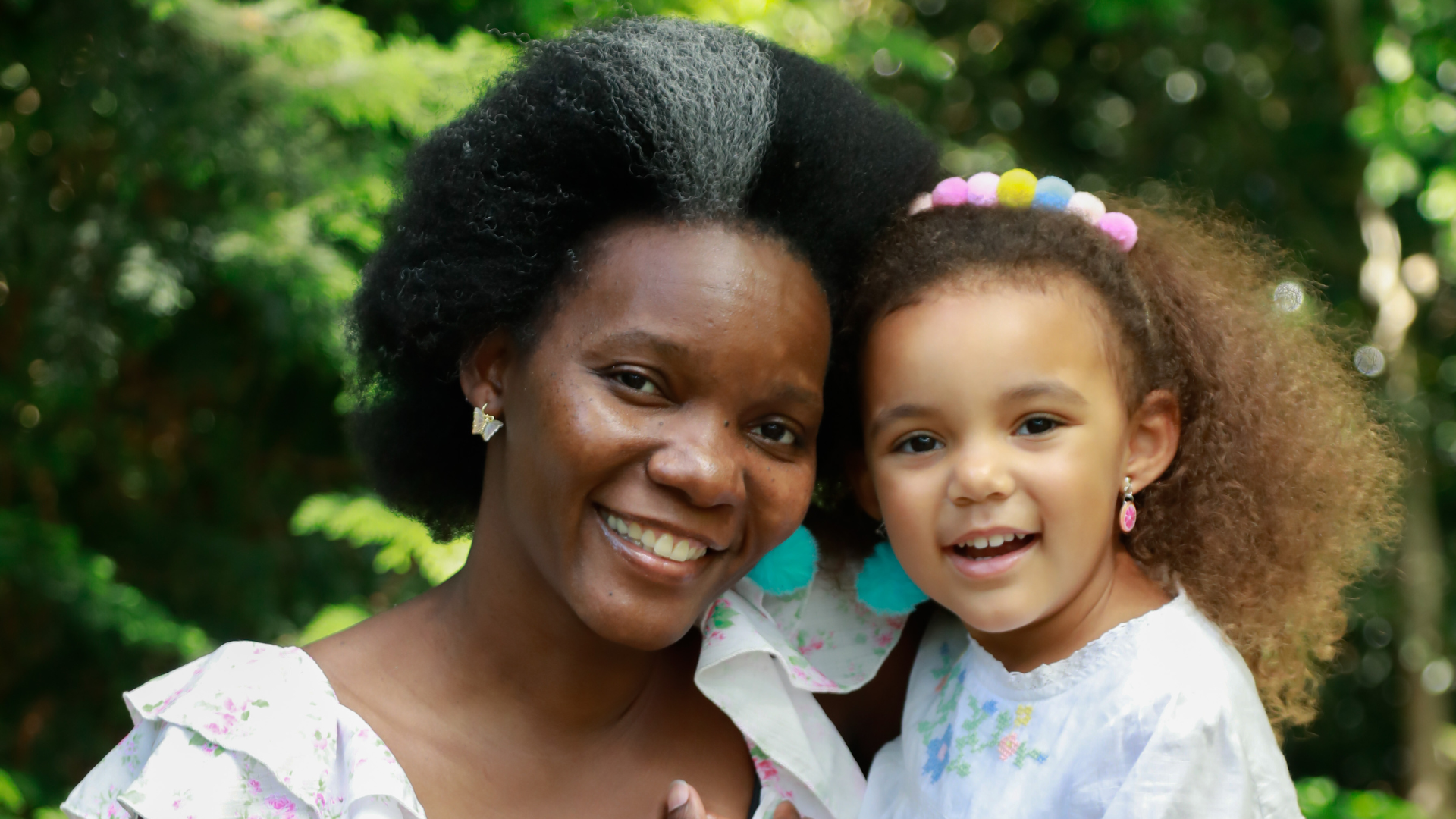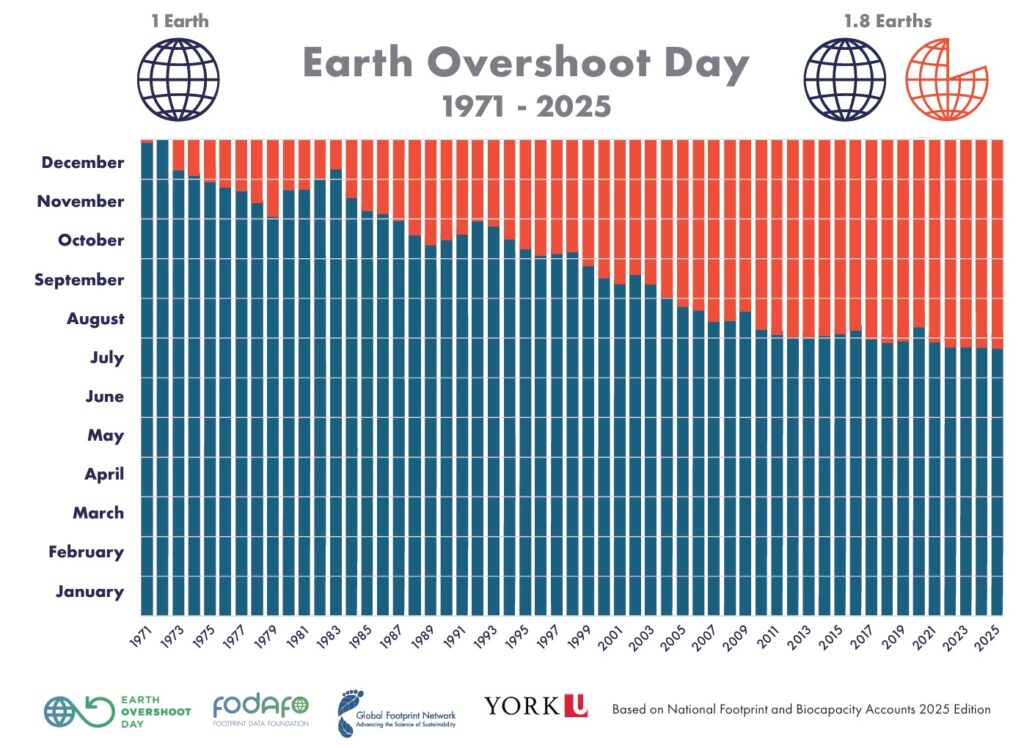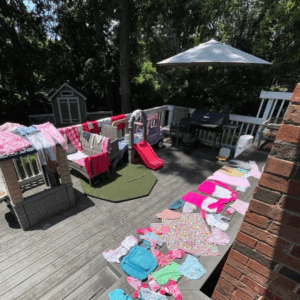Escaping overshoot: Exploring pathways to a sustainable future
Earth Overshoot Day fell on August 1 this year, meaning that in the first seven months of 2024, we already used up all the natural resources the planet can regenerate…
Read More
WriIs overshoot my burden? One mom’s journey to raise an environmentally aware child amid climate anxiety and the burden of ecological overshoot — through everyday choices and empowered parenting. Last week (on World Population Day, July 11th, to be exact), I heard my almost-four-year-old, FloryAnne, call herself a “climate change crusader.” She explained that it’s “like the Earth is getting too much blankets and it gets too hot on planet Earth.” When I asked what she meant, she added, “There’s too much trash or too much rain like could cause a flood, and people cut so many trees. I think that’s it.” She eventually drifted into toddler gibberish, but I soon realized where all this was coming from: a Bluey episode. My interest was piqued, so later, we rewatched the episode together. Inspired by the show, we talked about small things we can do to help the Earth, such as turning off lights, taking shorter showers (not easy for someone who loves to spend a long time under the hot water), recycling, and using the sun to dry our clothes, as I happened to be doing that day in the abundant North Carolina sunshine. When she asked why I wasn’t using the dryer, I told her, “I’m doing my part to help end overshoot.” That led to the inevitable question: In the simplest terms, I explained that it means using more of Earth’s resources than the planet can naturally regenerate in a year — that every year, Earth Overshoot Day, calculated by Global Footprint Network, marks the date we’ve used up our “ecological budget.” After that, we’re running a deficit. We’re overdrawing the bank of nature. But as I looked at her little face — curious, eager, hopeful — I wondered: Who carries the burden of overshoot? Her? Me? You? I’ll leave that question for you to answer. But for me, the answer is clear: It’s mine, and it’s hers too. I can’t pretend it isn’t. Children born in high-income countries like the US have far larger ecological footprints than those in low- and middle-income countries. Much of what my daughter consumes — plastic toys, fast fashion, packaging — will eventually end up in a landfill, even when most of what she has is hand-me-downs from our neighbor. The energy used to stream her favorite shows, the food she doesn’t finish, the long baths she loves — they all carry a hidden environmental cost. If anything, we should be helping kids understand early that trash doesn’t disappear, food waste fuels climate change, and that they have a role, however small at first, in protecting the planet. I’m proud that any time we’re out for a walk and she sees litter, she’s the first to point it out. This generation may inherit more challenges, but they’re also growing up with more awareness and more voices to guide them, unafraid to speak up for the Earth. That’s exactly what our Population Education program does. And if every one of us, especially those of us with the power to choose, recognized that it’s our burden, maybe we could finally move the date when Earth overshoot occurs to later in the year. This year, Earth Overshoot Day is the earliest it has ever been, and if everyone lived like the average US resident, we’d need five Earths. Globally, we’re already using the equivalent of 1.8 Earths, meaning that we’re using resources 1.8 times faster than they can be regenerated. The Global Footprint Network reminds us that overshoot isn’t inevitable. In fact, their Power of Possibility framework lays out five key areas where we can take action: Population is especially close to my heart, and we champion it every day at Population Connection. Population may be a sensitive subject, but it’s also one of the most powerful levers we have. The solution isn’t coercion, as we continually say — it’s choice: expanding access to education, voluntary family planning, and reproductive health care. When people, especially girls and women, are empowered to make informed decisions, family sizes trend smaller. Over time, that makes a real difference. The Global Footprint Network calculates that we can move the date back by 49 days by 2050 if every other family had one less child and parenthood was postponed by two years: “If we continued as now, we would be at 9.7 billion. This is the UN medium variant estimate. If each mother or father had on average 1.8 children (= 0.9 children per person), compared to 2.3 currently, and parenthood was delayed by 2 years, we’d be at 7.7 billion in 2050.” This is a long game. But it’s not a hopeless one. We certainly don’t want to raise our children in a cloud of climate anxiety — but some awareness, I believe, is essential. FloryAnne already fears thunderstorms and flooding — even when I reassure her that we live in a relatively safe area. These fears are not irrational. They’re her way of trying to make sense of a changing world. As Caroline Hickman, a psychotherapist and climate anxiety researcher quoted in a UNICEF article, puts it: “Teach your child how to be okay in a world that often does not feel okay.” That wisdom stays with me. I don’t want to scare FloryAnne, but I do want to prepare her. I want to raise a child who understands that even small actions matter, that she has choices, and that she’s not powerless. And I appreciate that the Global Footprint Network reflects this mindset too. They write: “We are not ecological resource- or climate-“doom-and-gloom” people. We’re also not over-optimistic, “change-your-lightbulbs-and-we’ll-be-OK” types, either. We’re realists. Somewhere in the middle.” Middle it is, then — at least for now — in our household. That ‘middle’ looks like watching Sir David Attenborough’s documentaries together, reading picture books like Love the Earth from American Girl, and slowly building a shelf of resources that meet her where she’s at. We have Greta Thunberg’s No One Is Too Small to Make a Difference, Bella Lack’s The Children of the Anthropocene, and even F**k Plastic: 101 Ways to Free Yourself from Plastic and Save the World — which might be more for me right now, but it’s part of the conversation we’re growing into together. Day by day, she’s learning that loving nature means caring for it, and that caring requires action. The current heatwave has also been a teaching moment. Anytime she spots a tree that’s been cut, she points out the horror in it. As she grows, I will teach her what overshoot means. I’ll model what it looks like to live within our ecological means. I’ll help her understand that we have power, not just to consume, but to choose differently. And I will tell her that this is partly why she will be my only biological child. I’m fortunate that I’ve had the power to make reproductive choices that suit me. (Yes, contraception fails sometimes, but it’s good I have a choice, which millions of women do not have.) Overshoot isn’t destiny. It’s also a choice. To quote Mathis Wackernagel, the founder of the Global Footprint Network, “Overshoot will end, either by design or disaster. Global Footprint Network focuses on growing the desire to end it by design.” I believe we can rise to that challenge. In our individual and collective capacities, we can choose to #MoveTheDate and be so over overshoot.
What is Earth overshoot?
Raising an eco-conscious child in a world of overshoot, am I putting too much on her?
We are using the equivalent of 1.8 Earths

So, How Do We #MoveTheDate?

Caring for nature by making considered choices
